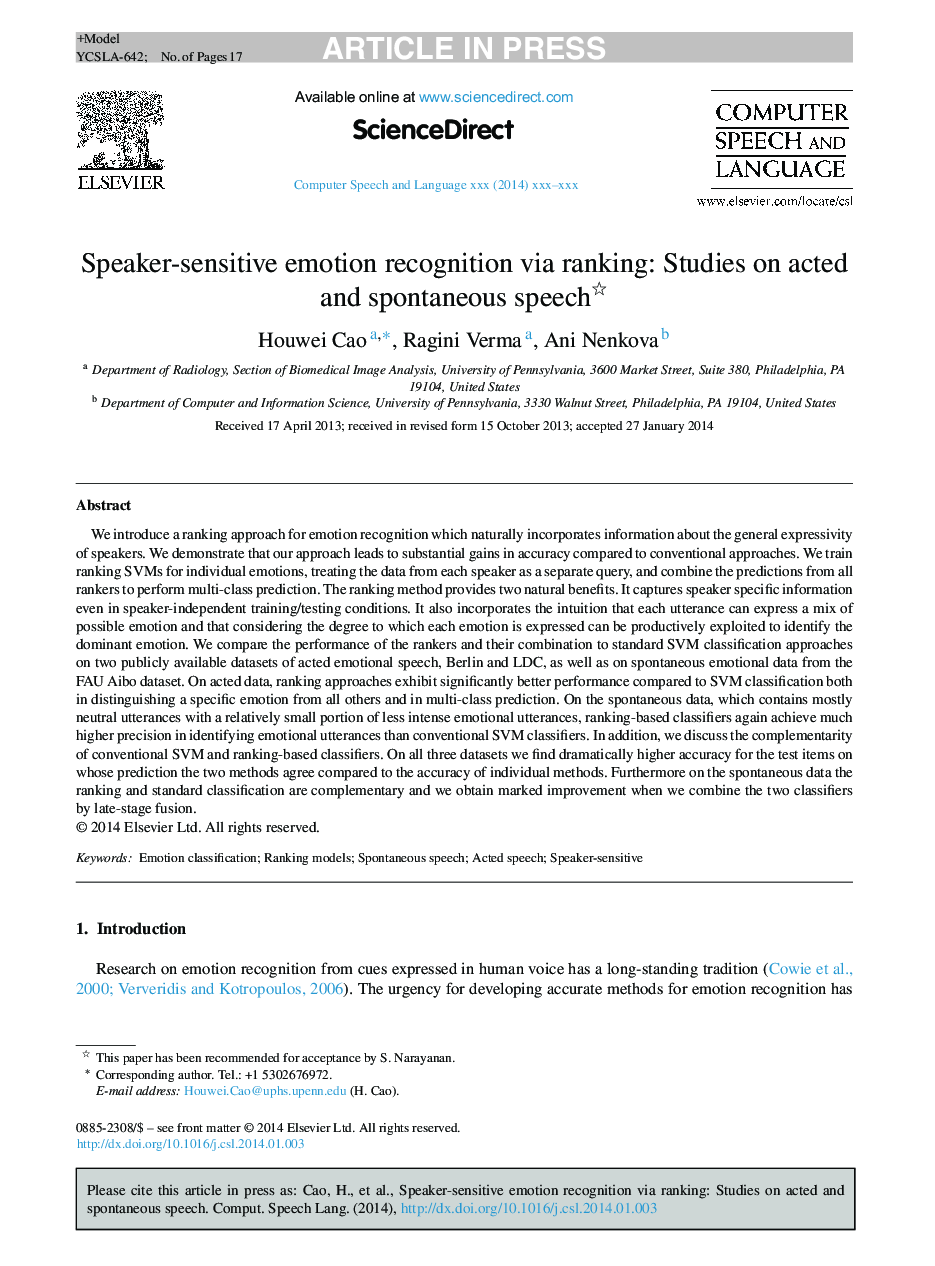| Article ID | Journal | Published Year | Pages | File Type |
|---|---|---|---|---|
| 10368591 | Computer Speech & Language | 2015 | 17 Pages |
Abstract
We introduce a ranking approach for emotion recognition which naturally incorporates information about the general expressivity of speakers. We demonstrate that our approach leads to substantial gains in accuracy compared to conventional approaches. We train ranking SVMs for individual emotions, treating the data from each speaker as a separate query, and combine the predictions from all rankers to perform multi-class prediction. The ranking method provides two natural benefits. It captures speaker specific information even in speaker-independent training/testing conditions. It also incorporates the intuition that each utterance can express a mix of possible emotion and that considering the degree to which each emotion is expressed can be productively exploited to identify the dominant emotion. We compare the performance of the rankers and their combination to standard SVM classification approaches on two publicly available datasets of acted emotional speech, Berlin and LDC, as well as on spontaneous emotional data from the FAU Aibo dataset. On acted data, ranking approaches exhibit significantly better performance compared to SVM classification both in distinguishing a specific emotion from all others and in multi-class prediction. On the spontaneous data, which contains mostly neutral utterances with a relatively small portion of less intense emotional utterances, ranking-based classifiers again achieve much higher precision in identifying emotional utterances than conventional SVM classifiers. In addition, we discuss the complementarity of conventional SVM and ranking-based classifiers. On all three datasets we find dramatically higher accuracy for the test items on whose prediction the two methods agree compared to the accuracy of individual methods. Furthermore on the spontaneous data the ranking and standard classification are complementary and we obtain marked improvement when we combine the two classifiers by late-stage fusion.
Related Topics
Physical Sciences and Engineering
Computer Science
Signal Processing
Authors
Houwei Cao, Ragini Verma, Ani Nenkova,
